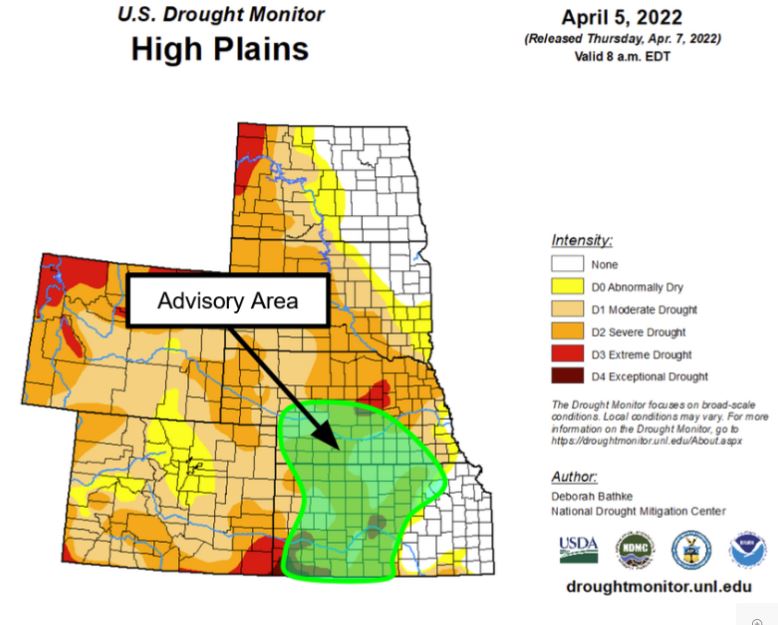
Subject: Critically dry conditions and delayed green up have created a volatile landscape for extreme fire behavior in
portions of central Kansas and Nebraska.
Discussion: Much above normal temperatures over winter combined with below normal precipitation rapidly developed
drought. These dry conditions have persisted into April and have intensified over the last few weeks. As a result, green up has been slow
to progress. Kansas Central Plains SIG ERC is at 95th percentile with numerous Kansas Mesonet stations and Nebraska RAWS at 97th+
percentile. Recent wildfires have exhibited extreme fire behavior and significant suppression issues. On the recent Carlson Fire (Riley
and Pottawatomie County), grass flame lengths exceeded 7-9’ with cedar flame lengths 25’+. Typical barriers of timber/leaf litter are
consuming efficiently and are not aiding suppression. This aggressive behavior is leading to spotting, rekindles, and extended attack.
Additionally, it poses a risk to life/property and unfortunately has already resulted in injuries and a fatality.
Difference from normal conditions: Spring is the climatological maximum in wildfire season in both Kansas/Nebraska. Thus far in 2022, the region has observed an increase in wildfire occurrence/severity.
- Moderate to Exceptional Drought with soil moisture profiles ranking in the 20th percentile.
- Burning index has exceeded record high values multiple times in the last week.
- Growing season index is at/below record low values for the time of year.
- Timely precipitation in 2021 yielded normal to above normal fine fuel loading for much of the region.
Concerns to Firefighters and the Public:
- Fires will grow exponentially fast if not suppressed quickly.
- Any increase in wind will result in extreme fire behavior, even if below typical thresholds of concern.
- Rekindles and holdovers are expected from previous wildland or prescribed fire.
- Typical effective barriers to spread including crop stubble, timber, and leaf litter are carrying fire.
Potential Fire Behavior:
- Anticipate extreme fire growth and expect long distance spotting.
- Consumption of heavier fuels with increased holdover and rekindles if not completely suppressed.
- In light wind scenarios, fire behavior is erratic and unpredictable.
Mitigation Measures:
- Request mutual aid quickly, expect extended attack and anticipate limited resources.
- Plan for indirect attack and potential life/property risk well in advance of the fire.
- Increase public awareness of preceding weather on days with heavy prescribed fire.
- Anticipate and understand Southern Great Plains Wildfire Outbreaks and their potential.
- Be aware of mental and physical stresses of a prolonged and active fire season.
Area of Concern:
Central Kansas and Nebraska including northeast Kansas and southwest Nebraska.
Issued By:
Chip Redmond, Meteorologist, Kansas Forest Service and Matt Holte, Fire Team Operations Leader, Nebraska Forest Service.